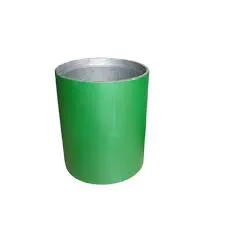- Afrikaans
- Albanian
- Amharic
- Arabic
- Armenian
- Azerbaijani
- Basque
- Belarusian
- Bengali
- Bosnian
- Bulgarian
- Catalan
- Cebuano
- Corsican
- Croatian
- Czech
- Danish
- Dutch
- English
- Esperanto
- Estonian
- Finnish
- French
- Frisian
- Galician
- Georgian
- German
- Greek
- Gujarati
- Haitian Creole
- hausa
- hawaiian
- Hebrew
- Hindi
- Miao
- Hungarian
- Icelandic
- igbo
- Indonesian
- irish
- Italian
- Japanese
- Javanese
- Kannada
- kazakh
- Khmer
- Rwandese
- Korean
- Kurdish
- Kyrgyz
- Lao
- Latin
- Latvian
- Lithuanian
- Luxembourgish
- Macedonian
- Malgashi
- Malay
- Malayalam
- Maltese
- Maori
- Marathi
- Mongolian
- Myanmar
- Nepali
- Norwegian
- Norwegian
- Occitan
- Pashto
- Persian
- Polish
- Portuguese
- Punjabi
- Romanian
- Russian
- Samoan
- Scottish Gaelic
- Serbian
- Sesotho
- Shona
- Sindhi
- Sinhala
- Slovak
- Slovenian
- Somali
- Spanish
- Sundanese
- Swahili
- Swedish
- Tagalog
- Tajik
- Tamil
- Tatar
- Telugu
- Thai
- Turkish
- Turkmen
- Ukrainian
- Urdu
- Uighur
- Uzbek
- Vietnamese
- Welsh
- Bantu
- Yiddish
- Yoruba
- Zulu
stainless steel reducer coupling
Understanding Stainless Steel Reducer Couplings Features and Applications
Stainless steel reducer couplings are essential components widely used in various industries, including plumbing, gas distribution, and food processing. These fittings play a crucial role in connecting pipes of different diameters, effectively allowing fluid flow while accommodating size variations. This article delves into the features, benefits, and applications of stainless steel reducer couplings, highlighting why they are a popular choice among engineers and manufacturers.
What is a Stainless Steel Reducer Coupling?
A reducer coupling is a plumbing fitting that connects two pipes of varying sizes. The unique design features a larger end that accommodates the bigger pipe and a smaller end designed for the smaller pipe. Stainless steel, due to its excellent corrosion resistance and favorable mechanical properties, is often the material of choice for these couplings.
Key Features
1. Materials and Corrosion Resistance Stainless steel is renowned for its durability and resistance to rust and corrosion, making it ideal for applications involving water, chemicals, and extreme temperatures. Common grades include 304 and 316 stainless steel, each offering different levels of corrosion resistance depending on the environment in which they are used.
2. Durability and Strength Stainless steel reducer couplings boast high tensile strength, making them suitable for high-pressure applications. Unlike their plastic counterparts, they do not deform or crack under stress, ensuring longevity and a reliable seal.
3. Versatility These couplings are versatile and can be used in various settings, from industrial applications to residential plumbing systems. Their ability to connect different pipe sizes makes them indispensable in complex piping networks.
4. Ease of Installation Stainless steel reducer couplings are designed for straightforward installation. They can be welded, threaded, or mechanically joined, depending on the requirements of the plumbing system. This adaptability simplifies the installation process and reduces labor costs.
stainless steel reducer coupling

Applications
Stainless steel reducer couplings find a wide array of applications across different industries
1. Plumbing Systems In residential and commercial plumbing, these couplings are frequently used to connect pipes of different diameters, ensuring a smooth fluid flow from one pipe size to another.
2. Food and Beverage Industry In food processing, hygiene is critical. Stainless steel’s non-reactive nature helps maintain product quality, making reducer couplings suitable for connecting various plumbing systems in food and beverage production.
3. Chemical Processing The robust nature of stainless steel makes these couplings ideal for handling corrosive chemicals. They play a crucial role in ensuring safety and reliability in chemical transport systems.
4. Oil and Gas Industry Reducer couplings are also vital in the oil and gas sectors, where they connect different piping systems, allowing for the efficient transport of oil, gas, and other fluids under high pressure.
Conclusion
Stainless steel reducer couplings are a fundamental part of modern piping systems. Their ability to efficiently connect pipes of different sizes ensures a seamless flow of fluids in various applications. The advantages they offer—such as durability, corrosion resistance, and versatility—make them an invaluable asset in industries ranging from plumbing to food processing to chemical handling. As infrastructure continues to evolve, the demand for reliable fittings like stainless steel reducer couplings will remain strong, cementing their role in facilitating efficient and safe fluid transfer across diverse environments. When selecting a coupling for your next project, considering stainless steel reducer couplings will undoubtedly lead to lasting benefits and performance integrity.
-
Tubing Pup Joints: Essential Components for Oil and Gas OperationsNewsJul.10,2025
-
Pup Joints: Essential Components for Reliable Drilling OperationsNewsJul.10,2025
-
Pipe Couplings: Connecting Your World EfficientlyNewsJul.10,2025
-
Mastering Oilfield Operations with Quality Tubing and CasingNewsJul.10,2025
-
High-Quality Casing Couplings for Every NeedNewsJul.10,2025
-
Boost Your Drilling Efficiency with Premium Crossover Tools & Seating NipplesNewsJul.10,2025







